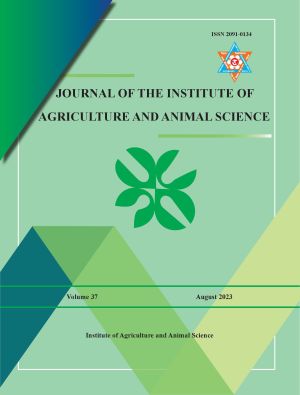Rice Straw Management Practices in Rupandehi District, Nepal
DOI:
https://doi.org/10.3126/jiaas.v37i1.56982Keywords:
management, rice-wheat, soil fertility, strawAbstract
Rice straw management has been a serious issue after the increasing use of combine harvesters to harvest rice in southern plains of Nepal since these machines cut rice 15-20 cm above the ground and leaves huge amount of residues in the field. A face-to-face semi-structured questionnaire survey was carried out in 60 households of straw burning, and 60 households of straw incorporation to find out straw management practices adopted by farmers, their motive behind choosing those practices and timing of carrying out those practices. Farmers practicing those straw management practices for at least five years was considered as final respondent. Respondents were selected by using purposive sampling technique. Survey was carried out in six places of Rupandehi district where the problem of rice residue burning is severe mainly due to the use of combine harvesters in rice and wheat. Study resulted soil fertility enhancement as the primary reason behind both straw burning practice as well as straw incorporation practice adopted by farmers. Timing of rice straw burning was within 1 week of harvesting rice by majority of farmers. Timing of soil incorporation of rice straw followed by majority of farmers was 8-12 days after harvesting rice. Straw burning results the nutrients imbalance and creates environmental pollution. So, soil incorporation of rice straw is suggested to return nutrients back to the soil.
Downloads
Downloads
Published
How to Cite
Issue
Section
License
Copyright (c) 2023 Tribhuvan University Institute of Agriculture and Animal Science

This work is licensed under a Creative Commons Attribution-NonCommercial 4.0 International License.

